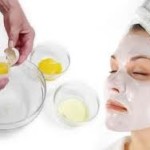Facial masks serve a variety of functions and must meet a set of different criteria for each function they strive to achieve. For instance, masks may be designed to absorb oil, hydrate or replenish dull skin. Many people enjoy having a facial but may find that it’s a little too expensive to run out to the salon every week or so. Instead, you can learn how to make a facial mask at home with some of the ingredients you find at the grocery store.
Regular cleansing on a daily basis will often remove surface dirt and grime, but only a facial mask will draw out the toxins and impurities from beneath the top layer of the epidermis. Many facial masks also help to exfoliate dead skin cells and unclog pores, all of which work to hydrate and protect your skin.
You may be tempted to try some of those pore strips which rely on adhesive to cling to impurities and strip them off. Unfortunately they also create an uneven skin surface that reflects the light poorly and gives your skin an underlying dull tone.

Most commercially produced facial skin masks are geared towards a specific problem, such as acne or hydration. Anytime you use an ove
r-the-counter mask and get redness or irritation after one or two treatments you should discontinue using it. Another option is to make your own mask from ingredients you already have in your pantry at home.
One incredibly popular face mask is made using oatmeal because it is a highly nourishing ingredient, soothes red, irritated skin and also exfoliates. For the best results you should use finely milled oatmeal that is sold at health food stores or organic stores. If you are unable to get those use raw oatmeal which you send through the food processor at home.
An oatmeal mask can be as basic as 3 teaspoons of warm water, mix until smooth and applied to the face. Honey can be added in order to increase the moisturizing effect on the face. Yogurt may be added to increase the chemical exfoliation affect. Most oatmeal masks will remove excess oil, reduce skin irritation, smooth skin and soften it. Depending upon the additives, it can also lighten the skin color and stimulate blood circulation.

Some have found using a raw egg yolk to be effective in helping the healing of blemishes. Using just the raw yolk, apply it to the face for 30 minutes and rinse it with cool water. Egg yolks are high in vitamin A, which helps to nourish the skin and keep it healthy.
Avocados also make a good face mask. Peel and cut one avocado and place it into a food processor. Add one third cup honey and begin blending the avocado and honey mixture together. Turn off the food processor and add one quarter cup of uncooked regular oatmeal. Process once more. At this point you can add extra honey or oats for a thinner for a thicker texture. Apply directly to a clean face and rinse after 10 to 15 minutes.
At home facials can be applied once or twice a week but professional facials should not be done more than every two weeks. Ask your facialist how often you should return as she will have a good understanding of the products she is using and how often they can be used on the skin.
A good facial mask will help your skin to feel smoother, softer and look more youthful. You can maintain that appearance by drinking plenty of fluids, eating a well balanced diet, getting plenty of sleep and staying on a good skin regimen.


Leave a Reply